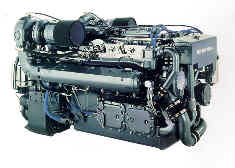The following article is reprinted from the Spring 2001 edition of the Society of Accredited Marine Surveyors newsletter, with permission of the authors. 
Customers sometimes express aggravation with laboratories that ask this question when they first deliver a sample of lube oil or fuel for analysis.
As a working relationship is established with a surveyor and their expectations are understood, this question is answered without our need to ask.
In seventeen years we have learned to be a little more sensitive to the needs of surveyors. It quickly becomes apparent that you can’t tell someone:
- “If you can’t start the engine you might as well not bother to sample it”
- “We couldn’t make an evaluation since you didn’t show how long oil was in use.”
- “The engine has to be run at least 20 hours before any evaluation is possible.”
- “If the sample wasn’t labeled legibly we probably threw it out.”
It is important that a lab try to understand the difficulties encountered as a surveyor. Likewise, the surveyor must understand that the results and evaluation developed from an analysis are entirely related to the type of sample that was possible.
While willing to test a few ounces of oil drained from a failed engine that hasn’t run in weeks, it must be understood that analysis might only be of value to detect gross contamination or degradation.
A true wear evaluation cannot be expected in this situation. Sampling and analyses often require compromises in methods, acceptable conditions, and expectations.
I have attempted to describe a sampling method for the perfect world where equipment is clean, able to be run to operating temperature, and proper sampling supplies are available.
Real World situations are then accepted and possible compromises in Sample procedures are then proposed with the limitations explained.
ENGINE OIL PREPARATION
Check oil levels, identify type of oil, record how long oil has been in use, perform sea trial or run engine under load for several minutes after reaching operating temperature.
SAMPLING
Several good methods are available for owners to prepare a convenient method of collecting used oil samples from engine, but for a surveyor that seldom has a chance to see the engine before the inspection job, we offer these suggestions:
Small manual or battery powered vacuum pumps are available that can use ¼” inch polyethylene tubing, readily available as icemaker hose, to draw oil samples from dipstick opening. Many oil-testing services provide pre cut lengths of the tubing for each sample bottle.
Some surveyors prefer to carry uncut rolls of the tubing, which they insert into dipstick and cut to desired length.
Tubing should allow pump to be operated comfortably while keeping sample container upright. When sampled hot, immediately after operation, end of tubing should be approximately one inch from bottom of oil pan.
The sampler end of tube should project only slightly into bottle and is less messy if flow of oil sample stops before reaching the tube.
When a four-ounce bottle is used the three ounces needed for full analysis, under most circumstances, leaves plenty of extra room. 
Suggestion: Make note whether the tubing is covered with rust, sludge, or film of oil when pulled from dipstick. This gives an indication of condensation collecting in tube, possibly from infrequent use, or short runs at dock insufficient to drive off water collecting in cold engine at start up.
A large plastic syringe, available from many pharmacies, can also be used in the same manner with smaller diameter tubing.
Sampled oil can be dispensed into bottle for shipment or some large syringes make provisions for detaching plunger rod and sealing tip for shipment in the syringe.
When a sample of oil is necessary from an engine that cannot or should not be started, sample should be marked accordingly.
Advise lab if sample is drawn directly off the bottom to identity settled wear solids, which will obviously exaggerate wear and contamination levels, or up an inch from the bottom in order to catch a cleaner sample for easier check of most physical characteristics of oil. If oil has been previously drained a sample, admittedly of limited value, might be available from filter.
Suggestion: When sampling a cold engine, coolant or raw water entry might be detected by a layer of water found below level of the oil, since the water has a higher density. Water entry after failure is usually apparent as free water under relatively dry lube.
Water entry during operation will normally cause a bottom emulsion layer with higher than typical amount of suspended water in the oil. Water entry after failure can often be confirmed by oil in filter containing minimal water concentration.
TRANSMISSION/REDUCTION GEAR OIL
PREPARATION – Basically the same as for engines. Check the fluid levels and warm up by engaging gears, forward and reverse. In some cases a fine screen is present to collect larger solids in the fluid stream. When time allows, a check of the screen both before and after sea trial might be considered for comparison.
SUMMARY
Oil analysis is best used as a trending tool to compare changes from one sample to another on the same piece of equipment.
Your lube analysts need all the available info you can supply to evaluate condition on a single sample with no prior history.
Human nature causes laboratory personnel to spend more time in sample review if there is more sample information influencing the final evaluation
Next time: Should I sample the fuel and coolant tanks?
Floyd J. Friloux of Lubriport Laboratories, SAMS® Affiliate Member
1650 Airline Highway
Kenner, Louisiana 70062 504-577-7492-O,
504 464-1292-Fax
ffriloux@lubriport.com






